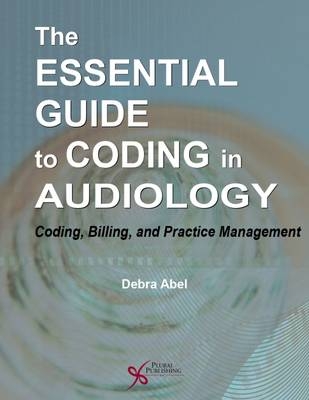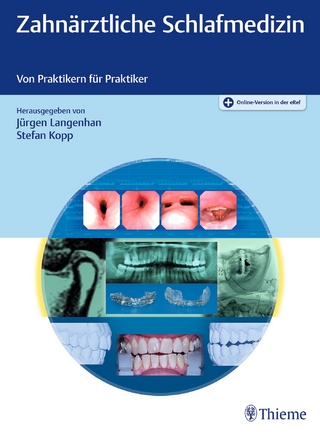
The Essential Guide to Coding in Audiology
Coding, Billing, and Practice Management
Seiten
2017
Plural Publishing Inc (Verlag)
978-1-59756-893-7 (ISBN)
Plural Publishing Inc (Verlag)
978-1-59756-893-7 (ISBN)
Written by audiologists for audiologists, this book addresses coding, reimbursement, contracting with third party payers, and the U.S. federal and state regulations that govern the practice of audiology.
The Essential Guide to Coding in Audiology: Coding, Billing, and Practice Management, written by audiologists for audiologists, addresses coding, reimbursement, contracting with third party payers, and the federal and state regulations that govern the practice of audiology. It is a practical guide for all practicing audiologists in the United States and fills the gap in training students in coding with a readable yet searchable book. Included are sections on audiology coding basics and advanced issues, federal regulations, and ICD-10-CM.An audiologist's income is tied to the ability to code and good revenue cycle processes; thus, he or she must properly bill and collect for services provided. As profit margins are squeezed, the ability to optimize revenue by compliant coding is of the utmost importance. The goal of this book is to provide contemporary information and the supporting resources in one location for what may seem to be elusive information for audiologists as well as for students regarding coding, reimbursement and compliance processes facing audiologists in most settings.The last decade has brought many notable changes to audiology; this user-friendly text will provide the reader, whether you are a student or a seasoned professional, the means to navigate these changes successfully.
Coding and compliance is a dynamic process and to assist, a toolbox of the three code families vital to audiologists are detailed within these pages. The procedure codes (CPT codes), the disease codes (ICD-10 codes), and the HCPCS codes for hearing aids and related services utilized by audiologists, are provided here so that the reader can have these at their fingertips in order to save time and effort. For options regarding hearing aid billing, insights into the world of insurance and contracts, understanding your revenue cycle, and the specifics of the laws that pertain to practicing audiologists and students only need to look so far as the other chapters.
The Essential Guide to Coding in Audiology: Coding, Billing, and Practice Management, written by audiologists for audiologists, addresses coding, reimbursement, contracting with third party payers, and the federal and state regulations that govern the practice of audiology. It is a practical guide for all practicing audiologists in the United States and fills the gap in training students in coding with a readable yet searchable book. Included are sections on audiology coding basics and advanced issues, federal regulations, and ICD-10-CM.An audiologist's income is tied to the ability to code and good revenue cycle processes; thus, he or she must properly bill and collect for services provided. As profit margins are squeezed, the ability to optimize revenue by compliant coding is of the utmost importance. The goal of this book is to provide contemporary information and the supporting resources in one location for what may seem to be elusive information for audiologists as well as for students regarding coding, reimbursement and compliance processes facing audiologists in most settings.The last decade has brought many notable changes to audiology; this user-friendly text will provide the reader, whether you are a student or a seasoned professional, the means to navigate these changes successfully.
Coding and compliance is a dynamic process and to assist, a toolbox of the three code families vital to audiologists are detailed within these pages. The procedure codes (CPT codes), the disease codes (ICD-10 codes), and the HCPCS codes for hearing aids and related services utilized by audiologists, are provided here so that the reader can have these at their fingertips in order to save time and effort. For options regarding hearing aid billing, insights into the world of insurance and contracts, understanding your revenue cycle, and the specifics of the laws that pertain to practicing audiologists and students only need to look so far as the other chapters.
Chapter 1. The Codes: CPT, ICD-10-CM and HCPCS Necessary to Bill Audiology Services, by Debra Abel. Chapter 2. Introduction to Medicare, by Debra Abel. Chapter 3. Federal Regulations Applicable to Audiology by Douglas A. Lewis. Chapter 4. Third-Party Reimbursement, Contracting and Credentialing for Audiology Services, by Kimberly M. Cavitt. Chapter 5. Itemizing Professional Services for Hearing Aids, by Stephanie Sjoblad. Chapter 6. Practicing in an Otolaryngology Office: Understanding Your Role in the Revenue Cycle, by Kimberley J. Pollock. Chapter 7. Practice Management for Audiologists, by Debra Abel. Index
| Erscheinungsdatum | 21.12.2016 |
|---|---|
| Verlagsort | San Diego |
| Sprache | englisch |
| Maße | 216 x 279 mm |
| Themenwelt | Medizin / Pharmazie ► Medizinische Fachgebiete ► HNO-Heilkunde |
| Medizin / Pharmazie ► Medizinische Fachgebiete ► Medizinethik | |
| ISBN-10 | 1-59756-893-7 / 1597568937 |
| ISBN-13 | 978-1-59756-893-7 / 9781597568937 |
| Zustand | Neuware |
| Haben Sie eine Frage zum Produkt? |
Mehr entdecken
aus dem Bereich
aus dem Bereich
ein Kompendium von Praktikern für Praktiker
Buch (2023)
Thieme (Verlag)
330,00 €
Differenzierte Diagnostik und Therapie
Buch | Hardcover (2021)
Springer (Verlag)
179,99 €
Buch | Softcover (2022)
Median-Verlag von Killisch-Horn GmbH
53,00 €


